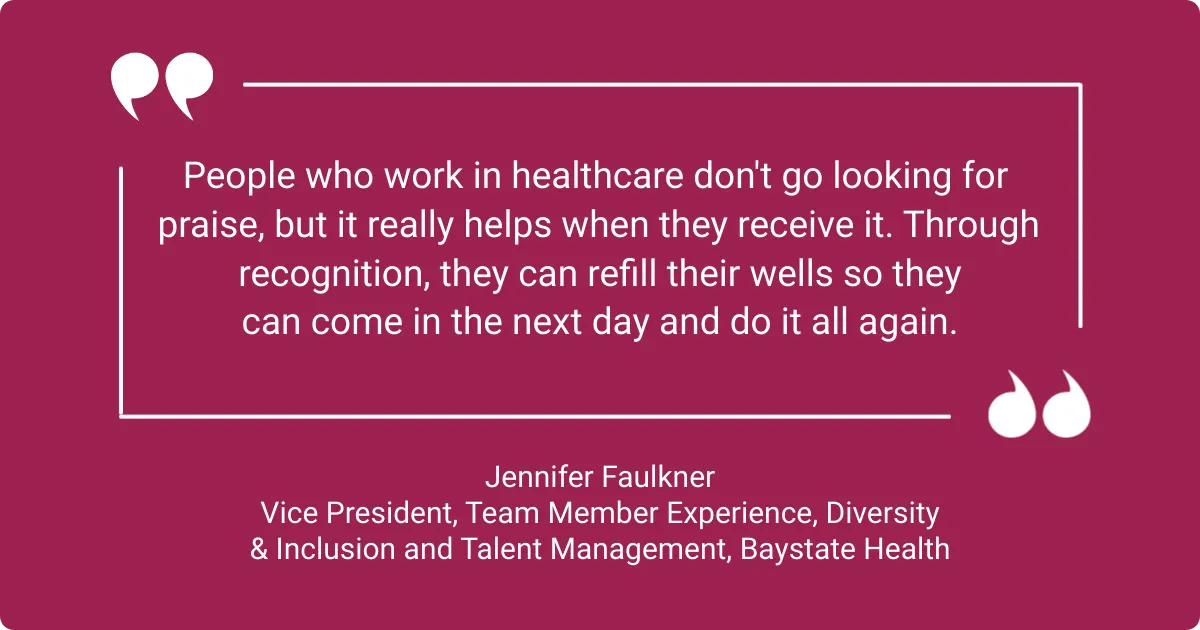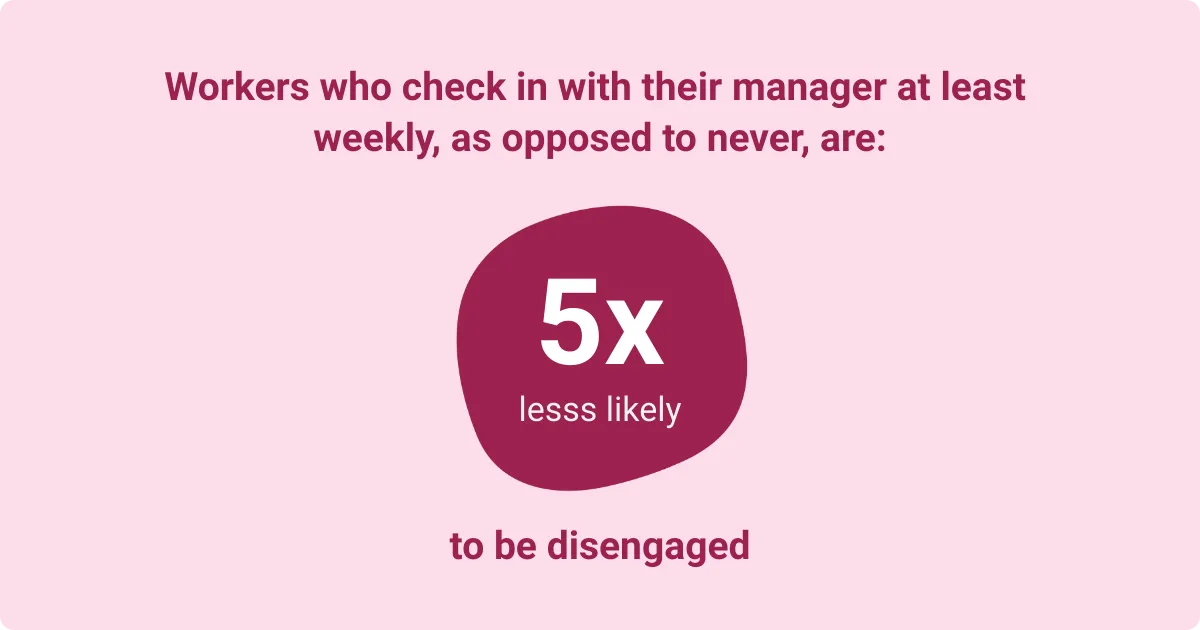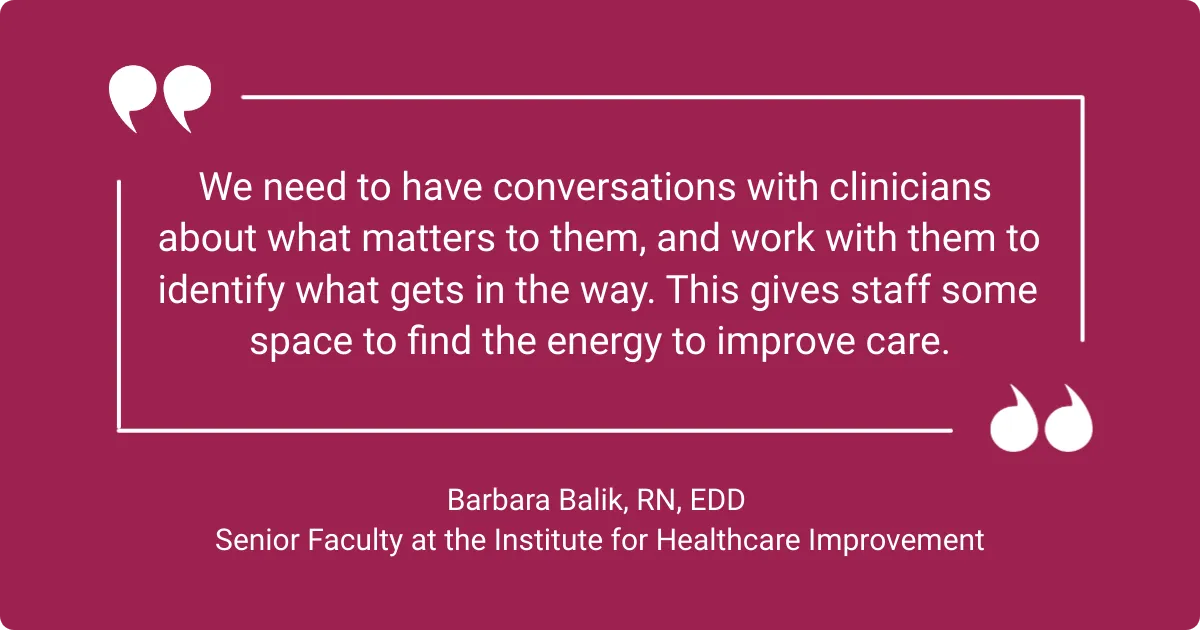Boosting Employee Engagement in Healthcare: Key to Enhanced Patient Care and Success

Employee engagement plays a crucial role in any healthcare setting, yet recent research shows that 39% of nurses are unengagedOpens in a new tab. This disengagement has a significant impact on patient outcomes and organizational success, indicating a pressing need to prioritize employee engagement in healthcare.
Why is employee engagement important in healthcare?
Employee engagement in the workplace matters in every industry, but the stakes are exceptionally high in a healthcare organization. The work is demanding, employees are prone to burnout, and patient outcomes are a critical priority that reflects the overall organization's fiscal success.
Employee engagement and the patient experience
Healthcare employee engagement is a direct reflection of the care patients receive. An engaged employee is more likely to provide empathetic, attentive, and effective patient care.
In a healthcare system, an engaged workforce is a necessity for long-term success and improved patient satisfaction and care outcomes. Engaged employees are more likely to foster strong patient-provider relationships that contribute to an ongoing, positive relationship.
Understanding the impact on healthcare quality
Simply put, engaged healthcare employees deliver higher quality patient care, resulting in fewer errors, satisfied patients, and more efficient care delivery. Research by the National Library of Medicine (NIH) on the association between healthcare staff engagement and patient safety outcomesOpens in a new tab, along with studies by PSNet on the impact of employee engagement on patient safetyOpens in a new tab, has repeatedly shown that healthcare quality metrics improve when employee engagement is prioritized.
HCAHPS scores
HCAHPS is the national, standardized, publicly reported survey of patient's perspectives of hospital care. An HCAHPS score is dependent on the satisfaction and engagement of healthcare providers’ own employees. HCAHPS scores impact the financial and reputational impact of hospitals and healthcare organizations.
Engaged employees improve patient communication, responsiveness, and overall hospital environment – all key factors that influence HCAHPS scores. “There are a couple of decades of evidence that happier hospital employees raise HCAHPS scores and improve patient safety and outcome quality,” says Barbara Balik, RN, EdD, senior faculty at the Institute for Healthcare Improvement.
Unlock the secret to higher patient satisfaction with these 5 powerful recognition strategies.
4. The relationship between engagement and retention in healthcare
Engagement can make a big difference in loyalty – and employee retention. Research by Harvard Business Review on how employee engagement drives healthcare quality and financial returnsOpens in a new tab has found that whereas 43 percent of disengaged employees were interested in changing employers, only 17 percent of highly engaged employees were contemplating greener pastures.
A positive work environment and strong engagement efforts reduce turnover and absenteeism, both essential for continuity of care and maintaining a stable, skilled workforce.
Key barriers to employee engagement in healthcare
Staffing challenges and resource limitations
Workers are repeatedly being forced to do more with less – there’s been a global healthcare worker shortage since 2020. It’s a burden that heavily weighs on and negatively affects healthcare worker engagement. Understaffing and insufficient resources negatively affect employee morale and job satisfaction.
Burnout and the impact of high-stress environments
Burnout is both a cause and consequence of employee disengagement in healthcare. Workers are managing chronic stress and overwork in high-pressure environments, emotionally demanding tasks, and long hours that leave workers fatigued. It’s hard to leave that at work, making it even harder to return to work engaged and ready to do their best.

Ineffective communication and lack of leadership support
Ineffective communication and insufficient support from leadership often lead to feelings of disconnect. When employees lack clarity or don't feel supported, they may struggle to connect with organizational goals, impacting their overall engagement.
Seven ways to boost employee engagement in healthcare
Recognize and reward healthcare employees
Recognition can make a significant impact on morale and retention. Timely and meaningful acknowledgment of healthcare workers’ contributions can lift morale, improving employee engagement. Healthcare organizations can implement both formal and informal recognition strategies, such as a peer-to-peer recognition program like Workhuman’s Social Recognition®.
“Recognition is a huge need,” says Balik, a former hospital CEO and CNO. “Most meaningful recognitions are specific, close in time to a particular action, and tied to the mission of the organization.”
Build a feedback culture through active listening
A feedback-rich culture is essential to making employees feel heard and valued. Actively listening to healthcare workers' concerns and suggestions improves engagement and workplace satisfaction. Tools like regular surveys, focus groups, and real-time feedback methods can be effective ways to foster continuous feedback and act based on employee input.
Support career development and continuous learning
Offering continuous education, certification programs, and leadership training for personal and professional growth shows healthcare workers that you value their contributions and growth. Creating a culture of development boosts the employee experience. Investing in employees' growth not only enhances loyalty but also creates a more knowledgeable and dedicated workforce.
Create peer support
Peer support in high-stress environments like healthcare is invaluable. Peer relationships foster knowledge-sharing and problem-solving, helping to reduce isolation and build stronger team bonds. “We need to address how we work together as team members to develop respect and a sense of community,” says Balik. “Psychological safety means that we can trust and are trusted.”
Initiatives like regular manager and team-based check-ins or peer-led wellness programs offer emotional support and encourage engagement within healthcare teams. Workhuman’s Conversations platform can help healthcare employees track goals and setbacks, laying the groundwork for genuine, supportive relationships.

The role of diversity, equity, and inclusion in enhancing engagement
In healthcare settings, DEI plays an essential role in bringing diverse perspectives, which can improve patient outcomes and foster a positive workplace culture. Healthcare organizations that prioritize DEI see benefits such as a reduction in turnover and sick days and an increase in eNPS.
To prioritize DEI in a healthcare setting, establish employee resource groups (ERGs) and offer regular training on unconscious bias and inclusive communication. Just by offering optional DEI training, 35% of health workers felt an improvement in workplace culture.
Gather and use employee input to improve systems
As with so many business challenges, to improve it, you have to measure employee engagement levels. “The only way a hospital will improve employee engagement is if they conduct an employee engagement survey, give each manager their own results, and hold managers accountable for creating an action plan with their team to improve on the worst items,” says Kevin Kruse, author of Employee Engagement 2.0.
Organizations can also collect employee input through focus groups or one-on-one meetings to identify pain points in healthcare systems. The outcome should be to use the gathered data to implement process improvements that directly impact both employee engagement and patient care outcomes.
Employees will be happier, from the outset of the change process, if their perspectives are integral to creating solutions to the problems that disengage them.

Leadership's role in creating a safe healthcare environment
A leader’s actions can be one of the most impactful employee engagement strategies as they are key to fostering a safe and supportive environment; behavior and culture start at the top. Therefore, leaders who prioritize employee engagement create a more open and accountable workplace, which leads to safer care for patients.
Leaders need to find ways to address problems brought up by employees without simply adding to-dos to a clinical staff that may already be feeling overburdened. Eliminating redundant patient care and administrative processes with technology or software is a productive way to free up staff bandwidth.
The future of employee engagement in healthcare: trends and opportunities
Emerging technologies for improving engagement
Technological advancements, such as employee engagement platforms, artificial intelligence (AI), and data analytics, are revolutionizing engagement strategies within healthcare. These tools offer streamlined, effective ways to connect with employees, enabling real-time feedback, improved communication, and more meaningful recognition of their work.
Shape the future of healthcare work. Discover 4 key opportunities to build a more agile and resilient workforce.
Shifts in organizational culture and leadership practices
Employees increasingly value transparency, inclusivity, and collaboration, making it essential for healthcare organizations to adopt more empathetic and collaborative leadership approaches. Leaders who communicate openly foster trust, encourage teamwork, and create environments where employees feel connected to the organization’s mission and engaged in their work.
Successful healthcare organizations are reimagining leadership roles to be more supportive and less hierarchical. Some organizations have implemented shared decision-making models that give frontline workers a voice in policy and process decisions, making employees feel more invested and engaged.
By adopting a more people-centered approach, healthcare leaders can cultivate a culture of belonging where employees feel empowered and supported, ultimately enhancing engagement and reducing turnover.
Prioritizing mental health and well-being programs
With increased awareness of the emotional and psychological demands of healthcare roles, many organizations are focusing on mental health and well-being as a core component of employee engagement.
High work-related stress levels, heavy workloads, and the mental and physical demands of healthcare can lead to burnout, affecting both the employees and their ability to deliver quality care. Healthcare facilities are now prioritizing mental health initiatives, including access to counseling, stress management workshops, mindfulness programs, and peer support networks.
Conclusion
Improving employee engagement in healthcare is critical to enhancing patient care and ensuring organizational success. By implementing targeted employee engagement initiatives, the healthcare industry can foster a work environment that supports and values its employees, leading to better outcomes for both staff and patients.